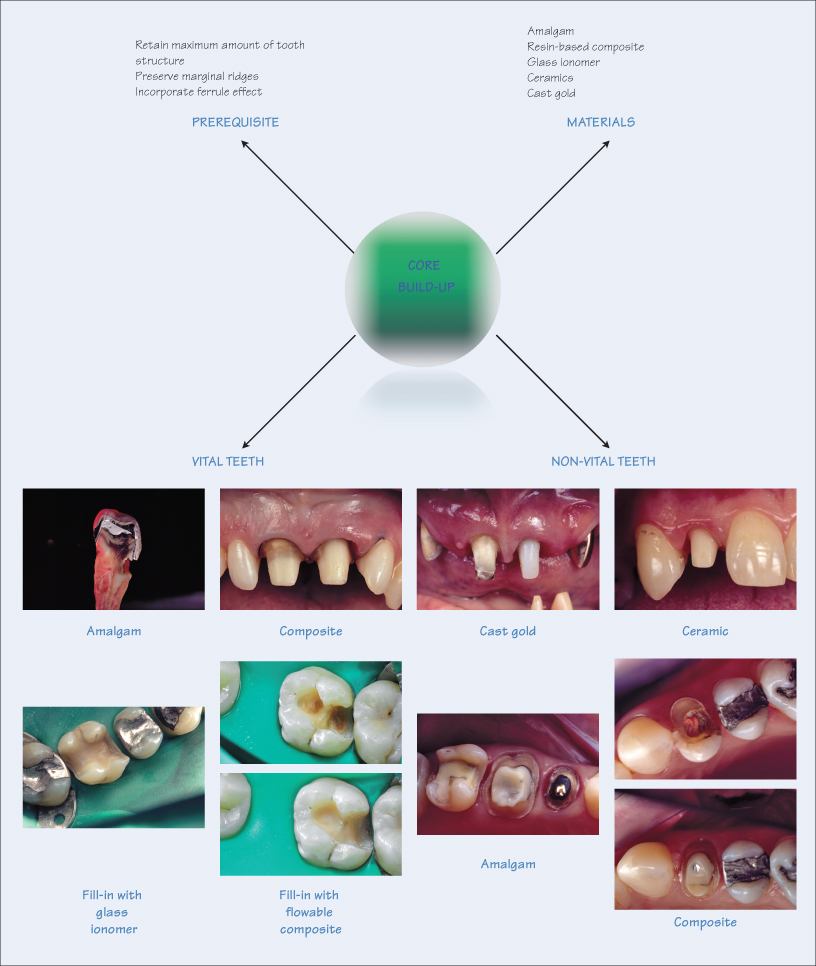22
Coronal Support: Core Build-Up

The purpose of a core build-up is to provide retention and resistance for definitive, usually extracoronal, restorations. The final restoration can be partial or full coverage depending on the amount of residual tooth substrate. Cores can be built up on either vital or non-vital teeth, which have previously received a post to gain additional intraradicular support from the endodontically treated root.
Ideal Properties of a Core Build-Up Material
At present, a single restorative material does not offer all the ideal properties of a core build-up material, which are:
- Adequate physical properties (flexural and compressive strength) to resist intra-oral forces;
- Non-allergenic;
- Biocompatible;
- Preventing microleakage of oral fluids at core-tooth interface;
- Chemical adhesion or bonding to tooth substrate, both enamel and dentine;
- Similar thermal properties to natural teeth (coefficient of thermal expansion and contraction);
- Minimum water absorption;
- Dimensionally stable;
- Cariostatic;
- Ease of manipulation.
Materials for Core Build-Up
The essential factor for a successful and long-lasting core, irrespective of the material used, is ensuring that at least 1.5 mm of dentine is present for the ferrule effect. The most popular materials for core build-ups are amalgam, resin-based composite, glass ionomer, ceramics and cast alloys.
Amalgam has traditionally been used as a build-up material, offering excellent strength, low solubility and bonding by micro-mechanical retention to dentine using dentine bonding agents (
Stay updated, free dental videos. Join our Telegram channel

VIDEdental - Online dental courses


